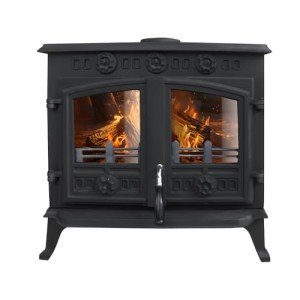Understanding Multi Fuel Stove Clearance: Safety, Efficiency, and Maintenance
Multi fuel stoves have actually ended up being significantly popular in modern homes due to their adaptability, performance, and aesthetic appeal. These home appliances enable homeowners to burn a range of fuels, such as wood, coal, or pellets, providing warmth and ambiance throughout the chillier months. However, with the benefits of multi fuel stoves comes the necessity of understanding the significance of clearance requirements to make sure security and optimum efficiency. This short article information the necessary elements of multi fuel stove clearance, consisting of clearance guidelines, safety steps, and common questions.
What is Multi Fuel Stove Clearance?
Multi fuel stove clearance describes the minimum range that needs to be kept between the stove and any flammable materials or structures in the home. This security measure is vital in avoiding unexpected fires and guaranteeing that the stove operates effectively.
Importance of Stove Clearance
- Fire Safety: The main factor for keeping appropriate clearance is to prevent any prospective fire threat. Combustible materials can easily fire up if placed too near a hot stove.
- Optimum Performance: Sufficient clearance enables proper airflow, guaranteeing efficient combustion and heat distribution.
- Relieve of Maintenance: Adequate space facilitates routine cleaning and maintenance, making it easier to preserve the stove in excellent condition.
Recommended Clearances for Multi Fuel Stoves
The necessary clearance ranges can vary based upon numerous aspects, consisting of stove style, maker specifications, and building policies. Below is a general standard for clearance requirements:
| Surface Type | Minimum Clearance Distance |
|---|---|
| From combustible walls | 600 mm (24 inches) |
| From non-combustible walls | 200 mm (8 inches) |
| From furnishings | 1000 mm (39 inches) |
| From ceilings | 1800 mm (70 inches) |
| From flammable floors | 300 mm (12 inches) |
| From chimney breasts | 300 mm (12 inches) |
| From the back of the stove | 200 mm (8 inches) |
Factors That Can Affect Clearance Requirements
- Stove Design: Manufacturers might have specific requirements based upon design capabilities.
- Fuel Type: Different fuels can produce varying heat outputs.
- Ventilation: Proper ventilation systems can minimize the need for extreme clearances.
Security Measures for Multi Fuel Stoves
To guarantee optimal security and performance in a home geared up with a multi fuel stove, the following steps are recommended:
- Installation by Professionals: Always have the stove set up by a certified professional to satisfy local building regulations and safety regulations.
- Routine Maintenance: Schedule annual examinations and cleaning to prevent flue obstructions and ensure your stove operates correctly.
- Ventilation: Ensure sufficient ventilation in the space where the stove lies to avoid carbon monoxide buildup.
- Usage of Heat Shields: Where space is restricted, heat shields can be set up to protect flammable product from excess heat.
- Clearance Checks: Regularly check and ensure that the clearance requirements are maintained, especially after modifications to space design or home furnishings.
Often Asked Questions (FAQs)
1. What fuels can I utilize in a multi fuel stove?
Multi fuel stoves are designed to burn different kinds of fuels, including wood logs, coal, briquettes, and pellets. Constantly seek Best Multi Fuel Stove UK from the stove's documents for the manufacturer's recommended fuels.
2. Can I utilize my stove without keeping clearance?
No. Failing to preserve the recommended clearance distances increases the danger of fire dangers. Constantly be conscious of the required clearances.
3. What should I do if I have limited space?
If you have limited area but desire to set up a multi fuel stove, consult a professional. They may recommend using heat guards to assist satisfy security requirements.
4. Exist specific building regulations for multi fuel stoves?
Yes, each region has its building regulations concerning stove setup and clearance ranges. It's important to contact regional authorities or building inspectors before installation.
5. How often should I clean my multi fuel stove?
You need to clean your multi fuel stove and flue a minimum of as soon as a year, particularly if you use it regularly. More regular cleansing might be required if you burn wood or other unclean fuels.
Understanding the clearance requirements for multi fuel stoves is essential for home security and performance. Adhering to recommended ranges and implementing efficient security measures can substantially lower fire dangers while enhancing the stove's performance. House owners are motivated to look for professional assistance when thinking about setup or upkeep to guarantee compliance with regional policies and correct stove operation. By remaining notified and alert, households can delight in the warmth and ambiance of a multi fuel stove without jeopardizing security.

